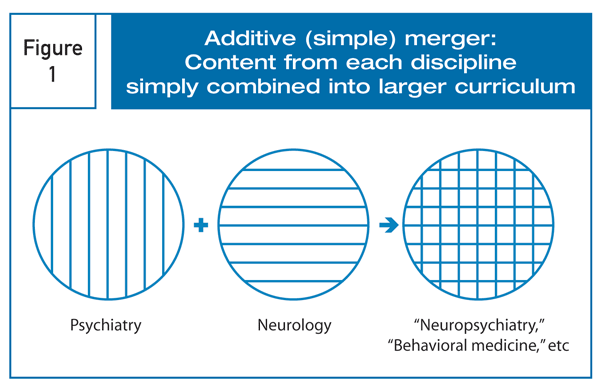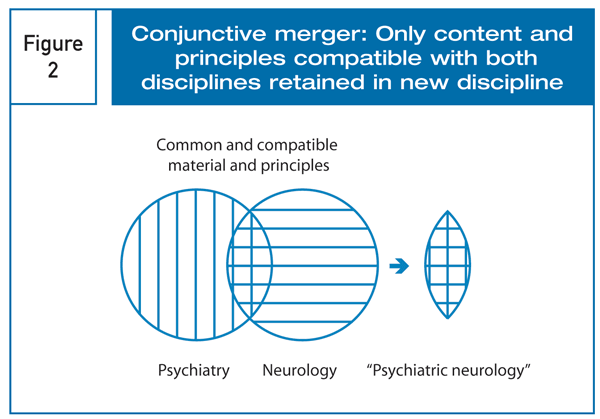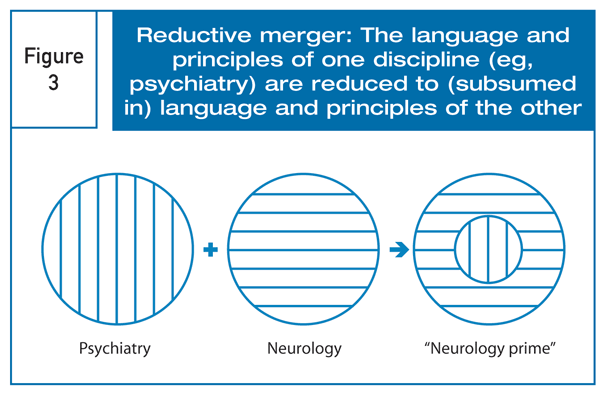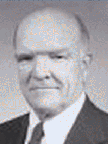Publication
Article
Psychiatric Times
Should Psychiatry and Neurology Merge as a Single Discipline?
Author(s):
The issues being debated here have important long-term implications for psychiatry, and we are pleased to present these revised versions of 2 principal presentations.
On August 27, 2009, at SUNY Upstate Medical University in Syracuse, NY, the Department of Psychiatry Grand Rounds featured a debate titled “Resolved: Psychiatry and Neurology Should Merge as a Single Discipline.” Professor Chaitanya Haldipur, MD, organized the conference.
The principal presentations were by Ronald Pies, MD, for the affirmative, and Robert Daly, MD, for the negative. Also participating were Jeremy Shefner, MD, PhD (chairman, department of neurology) for the affirmative, and Mantosh Dewan, MD (chair, department of psychiatry) for the negative.
We believe that the issues being debated here have important long-term implications for psychiatry, and we are pleased to present these revised versions of the 2 principal presentations.
IN SUPPORT OF THE RESOLUTION:
by Ronald Pies, MD

I want to begin by suggesting that the question being debated, “Resolved: psychiatry and neurology should merge as a single discipline,” is actually a bit misleading. To understand why, I need to take you back over 150 years, to 1859. That year marked the publication of a remarkable manual of medical diagnosis and treatment by the Boston physician Ira Warren. New Warren’s Household Physician was intended as a “brief description, in plain language, of all the diseases of men, women, and children.”1
The chapter, “Diseases of the Brain and Nerves”-what I call, the DSM-Minus-IV-is a gem of holistic thinking.2 Dr Warren essentially unified afflictions often called “neurological disorders” with those nowadays considered in the domain of psychiatry. Thus, various types of brain inflammation, chorea, and neuralgia are addressed in the same chapter as “derangement of mind” or “insanity.” Indeed, the good doctor seems uncomfortable with Cartesian dualism, noting that “some have supposed insanity to be a mental disorder merely, having nothing to do with the body. They might as well suppose the delirium of fever to be a disease of the mind only.”1(p195)
Under the general rubric of “insanity,” Dr Warren includes only 5 main types: melancholy, monomania (“insanity on one subject”), mania, dementia, and idiocy. (This last category-in which “the brain is not large enough to be the organ of intelligence”-is similar to what neurologists today would call anencephaly.) Closing out Dr Warren’s “DSM” is hypochondria-apparently not a cause of insanity but nevertheless, in Dr Warren’s view, a brain disease characterized by “constant fear, anxiety, and gloom.”1(p197)
What conclusion should we draw from Dr Warren’s classification, besides the fact that it is a good deal more compact than DSM-V is likely to be? In brief, we must conclude that as of 1859, there was no clear separation between neurology and psychiatry, at least on the level of general medical diagnosis. On the contrary, diagnoses in the 2 disciplines were essentially unified under the rubric, “Diseases of the Brain and Nerves.”
In the United States, it was really only in the years following the Civil War that psychiatry and neurology began to diverge as professions, owing in large part to the split between academic neurologists, such as Professor S. Weir Mitchell, and the so-called asylum psychiatrists. The latter were largely nonacademics, looked on with some disdain by the neurologists-and perhaps with good reason. As Professor Mitchell himself put it in his acerbic lecture to the Annual Meeting of Asylum Superintendents in 1894, “Where are your careful scientific reports? . . . You live alone, uncriticized, unquestioned, out of the healthy conflicts and honest rivalries that keep us neurologists up to the mark of fullest possible competence.”3
In subsequent years, as Dr Leon Eisenberg has pointed out, the split between neurology and psychiatry as professions became even wider as Freud’s psychoanalytic approach gained ground and as the etiology of psychotic disorders eluded the rudimentary neuropathological investigations available at the time. But this divergence of the 2 fields was essentially an artifact of professional rivalries and turf battles-not the result of well-conceived philosophical arguments or scientific discoveries. In Dr Warren’s 1859 text, neurological and psychiatric disorders, so-called, still sat comfortably side by side in the same chapter.
In short, the resolution we ought to be debating today is:
“Resolved: psychiatry and neurology should re-unite as a single discipline.”
And, indeed, I would argue that they should-although, I believe that such a reunification cannot proceed without certain kinds of linguistic and philosophical “bridging devices.” In fact, in the article, “Why Psychiatry and Neurology Cannot Simply Merge,”4 I took the position that simply “mooshing” the 2 fields together in some haphazard way would be unwise and unworkable.

Bringing neurology and psychiatry together is not like bringing about a merger between Chrysler and Fiat. If anything, it is more like creating a third language out of English and German, or French and Spanish.
The Figures demonstrate this more graphically. The first 3 depict ways in which neurology and psychiatry should not merge. In Figure 1, the content from each discipline is simply combined into a larger curriculum-a maneuver I believe would create an impossibly large and unintegrated hodge-podge of data and concepts. This is akin to the trap my colleague Seyyed Nassir Ghaemi5 might call the “more is better” fallacy of indiscriminate eclecticism in psychiatry.

In Figure 2, only the content and principles compatible with both disciplines would be retained in the new discipline-a maneuver that, unfortunately, would create a severely truncated and uninformative field of study, effectively gutting much of the content of each discipline. In Figure 3, the language and principles of one discipline (eg, psychiatry) are subsumed by the language and principles of the other-a maneuver that, in my view, would create either an overly brain-centered or overly mind-centered language, with loss of both meaning and communicative power.

Finally,Figure 4 suggests one way in which the 2 fields might successfully merge-by becoming, in effect, a new and unified field, “encephiatrics,” or “brain healing.”4 To accomplish this, however, we will need to develop a linguistic framework that allows us to “translate,” as it were, from psychiatrese to neurologese and vice versa. We will need to develop “bridging terms” or “transformative language,” so that when a psychiatrist speaks of, for example, the patient’s “higher-level ego defense mechanisms,” the neurologist’s eyes will not glaze over. Conversely, when the neurologist wants to describe a “sensory-limbic disconnection syndrome,” he or she will need language that tells the psychiatrist that a patient who shows inadequate emotional responses to painful stimuli is being discussed. Ultimately, encephiatrics should embrace even larger bodies of knowledge, relating to the social sciences and humanities (eg, the use of music, poetry, and literature in the service of promoting well-being).

Lest anyone envision this new field as a 15-year residency program, similar to the medieval tradition of matriculating at age 14 and becoming a doctor in one’s early 30s, I assure you this need not be the case. The American Board of Psychiatry and Neurology (ABPN) has already approved a 6-year, combined program in psychiatry and neurology; there is also a 5-year, ABPN-approved program in family practice and psychiatry. Either of these could serve as models for a residency program in encephiatrics. Indeed, Johns Hopkins University School of Medicine has had a combined neurology, neurosurgery, and psychiatry program since the 1970s.
Notwithstanding the difficulties involved, the effort of creating such a unified field is well worth making. There are several reasons why we should persevere. First, as Professor Allan Reiss6(p95) reminds us, “the brain is the organ of the mind.” We can endorse this view without taking sides in the ancient and arcane debate regarding the nature or reality of mind, the validity of physicalism, and so on. All we need to agree on is that the brain is the organ of the mind in roughly the same sense that the heart is the organ of circulatory function-the heart, as opposed to the pancreas or the liver. The brain is the organ of the mind in so far as the mind depends on the functions of the brain. Put another way, we are stipulating that the basic functions of the mind (sensory perception, calculation, memory, and so on) require nothing over and above a healthy, adequately perfused brain. And, as Professor Reiss6 comments, this may be the most important rationale for merging the multiple medical and behavioral disciplines.
Indeed, maintaining 2 disciplines-one devoted to the brain and the other to the mind-is a bit like having 2 medical specialties: one devoted to the study of the heart as an organ, and another devoted to circulatory function. Would we not find it odd to see 2 signs in the hallway of a hospital, one reading, “Department of Cardiology” and the other, “Department of Blood Circulation”? In my view, we should find it no less peculiar, even perverse, that we have balkanized our study of the human person into the fields of neurology and psychiatry. This almost Cartesian split of brain and psyche impedes our ability to understand and care for our patients.
Indeed, perhaps the strongest argument for unifying psychiatry and neurology is that as physicians, we are ultimately interested not in curing diseases of the brain or diseases of the mind but rather-as the physician Maimonides reminded us 8 centuries ago-in curing the diseased person. To achieve this goal, we must reunite neurology and psychiatry as a single, comprehensive, and humanistic discipline.
IN OPPOSITION TO THE RESOLUTION:
by Robert Daly, MD

I argue against the sweeping proposal that psychiatry and neurology should merge as one discipline. I begin by commenting on the terms and the social context of the debate resolution. To merge is “to cause (something) to lose its own character or identity in something else.” What sorts of things are merged? Titles, estates, political entities, corporations, elements of bureaucracies, lanes of traffic.
I interpret the resolution this way: it concerns what we, as physicians, ought to do-to merge or not to merge-and why. Further, the resolution has to do with identity, ie, how each specialty (and specialist) is identified, or reidentified, over time.
As to discipline, the verb (F. discipliner) means to bring under control, or to train. The noun “discipline” has a rich history in the West. In Latin, disciplina refers to the instruction of disciples or scholars; or to a branch of instruction intended to inculcate the disciple, scholar, or subordinate with right conduct, belief, attitude, or skill. Hence, the Code of Ethics of the American Psychiatric Association is a kind of discipline. For the purposes of this debate, I assume that the disciplines of neurology and psychiatry are identified by their literatures as well as conventional practices.
Next, consider that neurology and psychiatry are currently recognized as clinical specialties of medicine. Like other medical specialties, each in a general way is akin to the other, for each aims to secure the same kind of practical end or good, ie, the health of individual persons. We therefore expect psychiatry and neurology to have common concerns that find expression within each discipline. If those concerns were, throughout their entire range, identical or very similar, one could argue that the disciplines of these specialties should be merged. However, this is not the case.
It is also relevant to recall that specialties constitute divisions of medical labor within the ranks of physicians. While the histories of psychiatry and neurology are linked, their development has led us to recognize that they have different tasks, and therefore different identities, as specialties of clinical medicine.
Before considering these identities, we should ask why and how, in general, specialties are created, established, and disestablished. Specialties are created, sustained, and abolished because we deem such developments to be socially useful for everyone, or for some segment of society-not simply for physicians.
Clinical specialties are not grounded simply in necessity, or in our understanding of human biology, or in a univocal sense of health. Rather, clinical specialties emerge and disappear in complex ways, in response to a variety of principles and situations: for example, practices involving special skills (cardiac surgery), or disorders of organs (nephrology) or organ systems (gastroenterology) or of various regions of the body (otolaryngology). Other specialties arise in response to a kind of disorder (oncology); to stages of the life cycle (pediatrics); or to special milieus (aerospace medicine). Some specialties, such as hospital-based medicine, arise as a consequence of how medical care is funded and organized. In short, medical specialties imply some sort of originating principle(s), or else we could not accurately recognize them.
We would be remiss if we did not acknowledge that these divisions of labor are not always clear. Specialties may have overlapping clinical jurisdictions or boundaries; display different ideas and practices about the same clinical state of affairs; and engage, in a liberal democratic society, in market competition with other medical specialties as well as with practitioners who are not physicians. For these and other reasons, what I say regarding the debate resolution applies “for the most part,” or “by and large,” or “generally speaking.” What I say in rejecting the resolution will admit of ambiguities, ironies, uncertainties, and exceptions. I acknowledge the ignorance that shrouds many problems pertinent to this debate.
I also recognize that, indeed, psychiatrists and neurologists have a common interest in some kinds of cases, as expressed in the subspecialties of neuropsychiatry and behavioral neurology. But for the most part, neurology and psychiatry respond to different kinds of ill health and therefore exhibit different practical aims that require the acquisition and competent exercise of different practical skills. Each discipline also proceeds from a different body of theoretical knowledge and speaks the generic vocabulary of medicine in different voices. Neurology and psychiatry are constituted under the rubric of human health by means of different principles of human organismic order and disorder.
About neurology
The marks of ill health that summon the neurologist include, among many others, delirium, dementia, cognitive disorders, memory impairments, abnormal movements, syncope, seizures, aphasia, ataxia, and agnosia. Judgments that these behavioral and experiential problems are the province of the neurologist (or neurosurgeon) turn, in the clearest cases, on knowing that such clinical signs and symptoms are regularly correlated with typical alterations of the tissues, cells, or subcellular components of the nervous system. In principle, if the clinical marks of a neurological disorder are present, a typical alteration of structure is found. If the alteration is present, the clinical marks of the disorder are usually found-sooner or later. Neurology tends to disown any functional disorders that lack an anatomical basis.
In general, deviations from anatomical and other biological norms play a leading role in the definition of neurological disorders. Social and existential norms that specify normal, desirable, or appropriate behavior and experience typically do not define neurological disorders. Structural abnormalities of the nervous system and their attendant marks of ill health are ordinarily correlated with-or provoke a search for-typical pathophysiologies. Together, abnormal structure and physiology are presumed to account for or explain changes in the patient’s behavior and experience. Moreover, these changes have a pattern that allows pathological states to be recognized, classified, and understood as dysfunctions of the nervous system.
The typical kinds of disabling conditions to which neurologists attend are therefore known as insults to the nervous system (eg, traumas; vascular abnormalities; infections; tumors; toxins; demyelinating diseases; and genetic impairments of the structural/functional development of the brain, spinal cord, and peripheral nerves).
With respect to the debate resolution, it is not usually necessary to refer to sanity or madness when judging that a person has a neurological disorder. Indeed, many patients with neurological disorders are sane. If reference is made to madness in the diagnosis of neurological disorders, as for example with some dementias and cerebral tumors, the underlying conditions are considered manifestations of nervous system disease. Madness in these cases is not considered a condition in its own right but rather a sign or manifestation of another kind of pathological condition-much as a self-inflicted laceration would be considered secondary to a psychiatric disorder.
About psychiatry
By way of contrast, psychiatrists-in addition to attending to some of the signs and symptoms already noted-respond to a further range of complaints and narratives. These attest, in everyday language, to a judgment about another kind of organismic disorder. This judgment is commonly made by the patient-to-be, his intimates, or his community. The judgment that someone is not himself, is crazy, is mentally ill, or is not right is frequently made before the encounter with the psychiatrist.
While a neurological condition can be diagnosed in any human being, the judgment that someone is “crazy” or mentally ill is made only regarding human beings of whom agential performances are expected. Indeed, there is no other way to arrive at the judgment that someone is mentally ill, absent operative norms for performances and for the organismic capacity to enact them. Social and existential norms and ideals are thus proximate to the first diagnosis (ie, that someone is “mad”).
Let us now move beyond ordinary language and judgments and consider the vast psychiatric literature. Do we find therein an enduring and foundational principle of order and of disorder, corresponding to that which we have identified for neurology? I believe we do. It is an idea that receives virtually no attention in the psychiatric literature, although I believe it to be the radical idea that constitutes, however problematically, the foundation of psychiatry. It is the idea of sanity, which is understood as a form of health and as a medical category. Sanity is the kind of health and capacity we enjoy when the elements of personality are well enough developed and integrated with one another, and with a person’s knowledge and capacity to choose, that an individual is able to secure his prudential interests. Sanity is a kind of health predicated only of those human beings we believe capable of performing human actions, ie, activities that to some extent require knowledge and presume learning, relative to the conduct of a life.
It is by means of the medical idea of sanity that the categories of the normal and of functional integrity are established in psychiatry. Conversely, it is the diminution of sanity that ushers in the concept of madness as ill health and thus specifies the concept of the pathological in psychiatry. The particular kinds of madness distinguished by psychiatrists are the different clinical forms that in any historical epoch, the diminution of sanity is perceived to take (eg, schizophrenia, bipolar disorder).
Psychiatry, then, is that specialty of clinical medicine that understands personality from an organismic point of view: in terms of human health, as sanity; and in terms of ill health, as madness or mental illness. (There is no satisfactory term for these states in English.) The practical aim of clinical psychiatry, as I understand it, is to restore or maintain sanity. Because psychiatry has this aim, the discipline of psychiatry is directed at informing us regarding what is known and useful in the several arts of maintaining and restoring sanity.
Because our knowledge of how to achieve this aim is incomplete, it is desirable to pursue inquiry of every sort regarding how personalities are determined and how best to restore persons to sanity. Personality is shaped by native endowments as well as by acquisitions secured in the course of one’s life. The findings from fields of science-including neuroscience, genetics, psychology, and the social sciences-inform the discipline of psychiatry. So, too, do those teachings of the humanities and arts that bear on the ordering and disordering of personality. There are no a priori reasons for anointing one form of inquiry as preeminent in explaining or understanding all psychiatric conditions or their treatment, although experience may teach us to do so in certain kinds of cases.
Conclusion
The discipline of psychiatry draws on science and the humanities to restore and maintain a person’s sanity. In contrast, the discipline of neurology draws on various findings and teachings to restore and maintain the structural and functional integrity of the person’s nervous system. The disciplines that underwrite these 2 aims are necessarily different, because they guide us in our efforts to achieve, in the name of health, 2 different goods. Psychia-try and neurology are not the same medical specialty, nor are their aims and disciplines identical. I can discern no reason why the practical aims of either specialty would be well-served by merging them into a single discipline.
Dr Daly is professor of psychiatry at SUNY Upstate Medical University, Syracuse, NY.
References:
References
1. Warren I, Small AE, Thorndike W, Smith JH. New Warren’s Household Physician. Boston: AI Bradley; 1859. http://www.archive.org/details/cihm_01750. Accessed December 21, 2009.
2. Pies R. Dr Warren’s “DSM-Minus-IV”: Lessons for DSM-V? Psychiatric Times. June 30, 2009. http://psychiatrictimes.blogspot.com/2009/06/dr-warrens-DSM-Minus-IV-lessons-for-dsm.html. Accessed December 22, 2009.
3. Worthington JF. When psychiatry was very young. Hopkins Medicine. Winter 2008. http://www.hopkinsmedicine.org/hmn/W08/annals.cfm. Accessed December 22, 2009.
4. Pies R. Why psychiatry and neurology cannot simply merge. J Neuropsychiatry Clin Neurosci. 2005;17:304-309.
5. Ghaemi SN. The rise and fall of the biopsychosocial model. Br J Psychiatry. 2009;195:3-4.
6. Reiss AL. Childhood developmental disorders: an academic and clinical convergence point for psychiatry, neurology, psychology and pediatrics. J Child Psychol Psychiatry. 2009;50:87-98.






